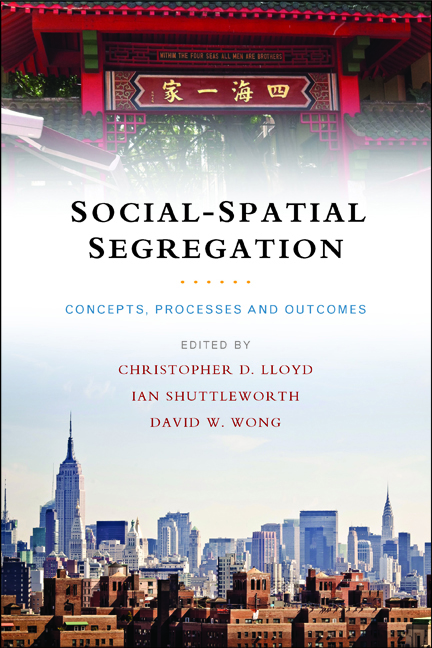fifteen - Class segregation
Published online by Cambridge University Press: 04 March 2022
Summary
Introduction
This chapter concentrates on the causes, outcomes and implications of social and geographical segregation by class, using the example of how social geography has changed in Britain since around 1968, and putting these changes into a wider geographical and historical context. (Northern Ireland is not included for numerous reasons, not least because it has a special and very different recent history of segregation.)
Here I argue that the antecedents of the current growth in class segregation in Britain can be seen as early as the mid-1960s especially in voting records from around that time onwards. Figure 15.4, below, shows the first tiny increase in this form of segregation to have occurred in 1964. Compared to 1960s racial segregation and rioting in the US, what was happening in the UK was almost imperceptible change, but it was slow and steady change in one particular direction. By the end of the 1970s economic polarisation was following that earlier rise in political segregation. This led to rising social polarisation, seen most clearly in rising spatial segregation between tenures and within the British housing market during the 1980s. The same occurred in the US. Poorer areas became residualised, while in rich areas house prices began to soar upwards, stumbled briefly in 1989, and then took off again.
During the 1990s wealth inequalities continued to grow, and next came consequential and huge rises in health inequalities. In the UK, this is what increasing class segregation resulted in. In the US, race may have been more important. In mainland Europe no similar great rises in segregation were measured, and in some rich nations, processes of equalisation were taking place during this same period (Dorling, 2012). In the UK for a few years in the early 2000s, it looked as if the rising segregation might be ending, but that again was just a stumble. The overall outcome has been increasingly ‘different strokes for different folks’ growing up in different neighbourhoods.
In Britain, and it can also be argued in the US, the implications of this rising segregation have been a growth in ignorance across the board: ignorance of poverty for the rich, ignorance by the poor of the true value of riches held by the few, and more and more people seeing themselves as average, while fewer are near to average.
- Type
- Chapter
- Information
- Social-Spatial SegregationConcepts, Processes and Outcomes, pp. 363 - 388Publisher: Bristol University PressPrint publication year: 2014



